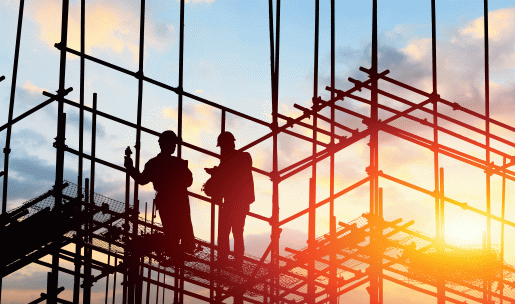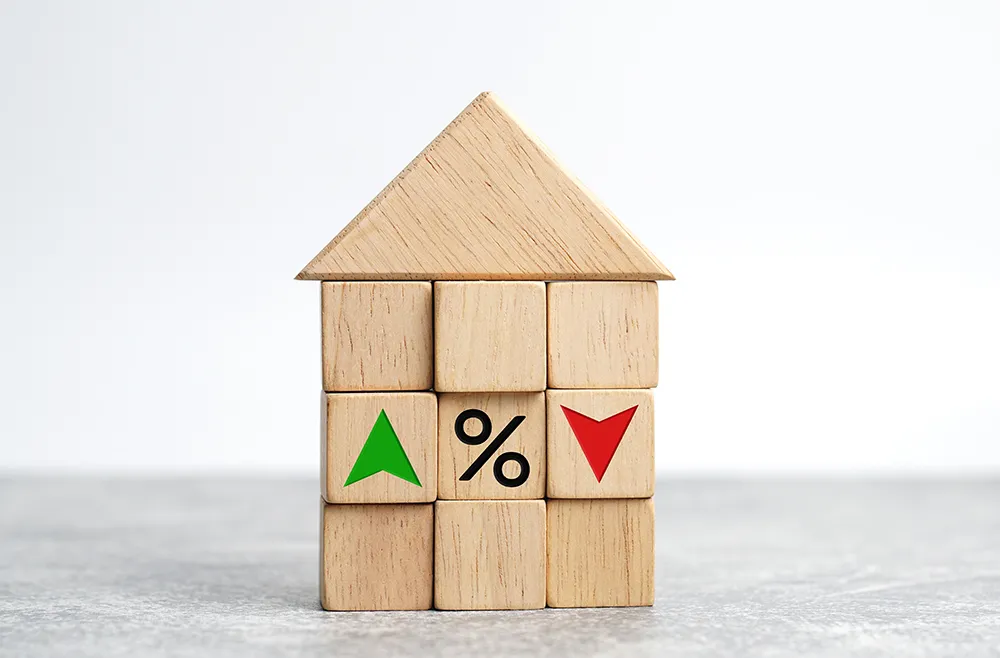
Performance in construction has continued to falter in the first quarter of this year, according to Glenigan’s latest construction index, amid price inflation, economic uncertainty, and ‘lukewarm’ investor appetite.
Glenigan says this is evidenced by a 40% drop in starts compared to 2022 figures and a 22% decline against the preceding three months.
Residential construction experienced an overall decline in the three months to February as starts fell 27% to stand 43% lower than a year ago.
Private housing performance finished 29% down against the preceding three months and 39% compared with the previous year.
Social housing also dropped back, with work starting on site falling 22% against the previous three-month period and plummeting 57% on 2022 levels.
Meanwhile, the value of starts across non-residential sectors fell by 19% during the three months to February, finishing 38% lower than levels seen last year.
Overall performance was weak, with hotel and leisure and community and amenity two of only three verticals to make any headway on the preceding three months, advancing 35% and 5% respectively.
However, they failed to increase against the previous year.
Industrial project-start performance saw a 41% fall during the three months to February to stand 57% lower than a year ago.
The value of project starts in retail declined 24% against the preceding three months and 39% against the previous year.
Offices faltered on the activity in the last quarter of 2022, with the value of underlying project starts falling back 23% against the preceding three months to stand 28% down on a year ago.
Health project starts also slipped back, declining 34% against the preceding three months to stand a sharp 50% down on the year before.
Education starts fell down a modest 1% against the preceding three months but remained 24% lower than 2022 levels.
Civils performance slipped back 8% against the preceding three months to stand 17% down on a year ago.
Infrastructure starts dropped 18% against the preceding three-month period, down 43% on the previous year’s figures.
However, civils decline was partially offset by utilities activity, with starts increasing 6% against the preceding three months to stand 76% up on a year ago.
On a regional basis, the index shows that performance was poor, with most of the UK experiencing a weakening in project starts during the three months to February.
However, in the North East, the project starts increased by 19% against the preceding three months. Despite this, starts failed to match 2022 levels, remaining 20% behind.
The value of project starts in the South East went up by 5% against the preceding three months but remained 27% lower compared to the previous year.
London and the South West weakened against the preceding three months, falling 18% and 15%, respectively.
Both regions were down on the previous year, remaining 46% and 34% lower than a year ago.
Some areas of the UK fared even worse, including Scotland where the value of project starts fell 31% against the preceding three months to stand 35% down on a year ago.
This was also the case in the East Midlands, West Midlands, and the North West which all crashed compared to the preceding three months and the previous year.
Yorkshire and the Humber suffered the heaviest fall in project starts, declining 53% against the previous three months to stand 61% down on a year ago.
Glenigan’s economic director Allan Willen, says, “Many will be disappointed to see performance levels continue to proceed on their downward trajectory, but given the current economic malaise it’s hardly surprising.”
“The year got off on a slow footing, with a further weakening in project starts during the three months to February reflecting the ongoing ripple effect of international conflict, weak economic policy, disrupted supply chains, and rising costs.”
“Consumers and investors are spending thriftily with many holding back until a degree of certainty returns to the economy. This is having a knock-on effect for the construction sector, prompting many contractors to follow suit and ride out the storm before committing shovel to soil.”
“Nevertheless, improved political stability in recent weeks and expectations that interest rates will not rise as significantly as initially feared, combined with promised government investment in large-scale infrastructure projects, will hopefully provide a much-needed shot in the arm to boost performance in Q2 and Q3.”



